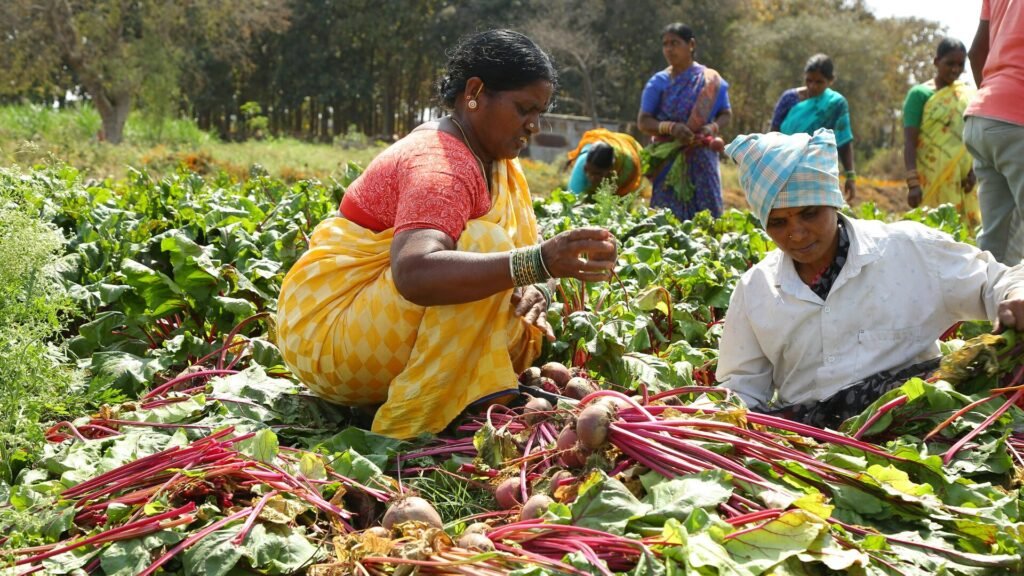The K-Curve in Indian Economy : The Uneven Renewal of India’s Economy.
Vernica Singh
October 1, 2024. 4 minute Read
Let’s think about two families in the same city. One family works in the growing tech world, while the other runs a small shop. The tech family’s wealth increased when they worked from home during the pandemic. But the shop owners struggled, trying to get by with less foot traffic and lockdowns.
This big difference in how they fared is part of the K-Curve.
This K- Curve shows how different groups and sectors bounce back from tough times in a different way—while some thrive others stay stuck or get worse.
No wonder! MaybetThis is why today we see a strange curve where we find one section who can afford Dua Lipa/ Coldplay tickets but there is another section who is still finding it tough to meet the ends.
After COVID-19 hit, the K-curve became clear in the Indian economy. The tech, e-commerce, and banking areas saw colossal growth, even creating new billionaires!
Meanwhile, tourism, hotels, and small businesses took a big hit, leading many to shut down for good. Stock markets were booming while many faced job losses—this K-shaped recovery pointed out that rich folks were doing great while the vulnerable were struggling hard.
"
Let’s examine how this K-curve changed things in India after the pandemic, looking at causes and possible fixes for this economic gap and what it all means.
The K-curve in India
The Stock Market jumped from 27,590 points in March 2020 to over 50,000 by March 2021!
Oxfam said billionaires added $40 billion to their riches during this time, while IT & medicine raked in profits of 40-50%.
Meanwhile, among lower-income groups, Unemployment rate soared to 23.5% in April 2020 but dropped later—it stayed above pre-pandemic levels for many who were already struggling.
Pay cuts were common too—20% to 30%. Sadly, millions lost jobs altogether.
Over 30% of small and medium businesses had to shut down because they needed help handling the financial blows from lockdowns, and fewer customers showed up.

Some reports show issues related to our K-curve:
1% of India’s richest owned more than 40% of total wealth.
Two hundred thirty million people fell back into poverty while stock markets kept shooting up for those who were wealthy.
During the pandemic in April 2020, the Unemployment rate hit an eye-popping peak of 23.52%, mainly affecting low-income workers.
Causes of the K-Curve in India.
As India pushes for economic recovery, only some are treated equally. The K-curve’s root causes are found in an uneven terrain where certain parts recover quickly while others remain in the shadows. To comprehend this inequality, we must investigate the primary reasons for this expanding disparity.
Here are they:
1. Economic inequalities
Economic disparity is a significant contributing factor in India’s K-curve. Big gaps exist because more well-off people have better resources, like tech or unique chances, that help them bounce back quickly, while the poor still suffer because of lack of basic necessities.
2. Differences between sectors
During the pandemic, many industries, notably technology, e-commerce, and pharmaceuticals, experienced extraordinary development due to changes in consumer behaviour. These businesses quickly adapted to remote labour, online business strategies, and the growing need for healthcare products.
However, Tourism, hospitality, and small retail, which rely significantly on physical presence, were particularly hard hit. In fact, many who worked in the hospitality industry of gulf countries left their jobs and country when they were out of their savings while working in Gulf countries.

3. Skill and education gaps
Differences in education and skill levels also influenced the K-curve. Individuals with higher education and digital abilities were better prepared to adapt to remote employment or enter new industries. Meanwhile, people in the informal economy or with little formal education found it challenging to keep up with shifting job markets.
4. The urban-rural divide
The urban-rural split in India is also a factor driving the K-curve. Urban areas recovered more quickly from the epidemic due to improved infrastructure, digital connectivity, and access to healthcare. Rural places with lacking amenities have experienced economic arduous duties, which urban-rural divisions.
5. Policy Reactions
While government efforts during the pandemic were beneficial in specific ways, they may have unintentionally led to the K-curve. Relief measures like tax reductions and stimulus packages primarily benefited larger firms and the formal sectors. The informal economy, which employs a substantial portion of India’s workforce, received insufficient help, worsening the recovery gap.
Impacts of the K-Curve on India's economy
The K-curve’s ripple effects extend beyond economic graphs.
They are felt in homes, companies, and communities all over India.
The consequences of K-curve increasing division could transform India’s future, posing issues that extend beyond the economy.
1. Increasing Income Inequality
While the rich saw plausible rise because of investments but the middle and lower middle class faced stagnation, if not losses!
2. Popular in the job market
The K-curve has polarised India’s labour market. Highly skilled individuals in the technology and financial sectors have found plenty of opportunities. However, people in low-skilled or informal jobs find sweet spots more challenging to navigate, leading to rising unemployment rates.

3. Strain on informal workers
The economic collapse disproportionately impacted India’s informal sector, where day labourers, small business owners, and street sellers were hit hardest. They risk losing both income and jobs as safety nets barely exist, leaving poverty worsened!
The Blue collars were the worst hit, where they had to migrate back to their state in search of livelihood, once they were out of savings or owners had the inability to bring business.
4. Impact on small and medium-sized enterprises (SMEs)
The economic decline deeply affected small and medium-sized firms (SMEs), particularly those in traditional textiles, retail, and hospitality industries. Unlike major organisations, SMEs may lack the capacity to transition quickly to digital models, resulting in extended recovery times.
5. Changing Consumption Patterns
Consumer behaviour also changed during the pandemic, with a greater emphasis on internet buying and digital services. This transition favoured larger organisations with established web infrastructure, while conventional brick-and-mortar enterprises struggled to attract customers, exacerbating the separation between industries.
Implications of the K-curve for India
The K-curve depicts more than simply economic imbalance; it also foreshadows the deeper issues India may confront if this divide remains unchecked. The consequences of this unequal recovery extend far beyond financial figures, affecting every part of society, from social stability to long-term economic expansion.
As the disparity between the thriving few and the struggling many increases, India risks not only economic stagnation but also societal disintegration. The implications are important to address the significant changes happening nationwide.
1. Long-Term Economic Growth
According to the K-curve, the wealthiest part of the economy benefits from growth and development, while the vast majority of rural and low-income people continue to struggle. As consumer demand falls, unequal growth may lower overall economic expansion. Lower-income households may spend less, restricting the possibility for growth in companies that rely on broad-based consumption.
2. Social Instability
The widening disparity between rich and poor may lead to various social challenges.
Income, healthcare, and education disparities could exacerbate societal differences, resulting in poor mental health, and may affect their overall wellness.
3. Human Capital Development Challenges
Access to education and healthcare may help India’s human capital development. Without equitable access to resources, vast portions of the population may lack the essential skills or health to contribute to the economy, widening the divide.
Still very few dare to dream big, where there is a lack of understanding that for great career prospects one may need a good number of years to struggle or grow. They often believe one day, their fate may change as quickly as Sunil Shetty’s character in the bollywood movie, “Dhadkan.”
4. The digital divide
The digital divide is one of the most distinguishing elements of India’s K-curve. Individuals with higher incomes and those living in cities have more access to digital infrastructure, allowing them to work remotely, engage in financial markets, and benefit from the growth of e-commerce.
Meanwhile, rural areas and low-income people are falling behind due to inadequate internet connectivity and access to technology.

5. Sectoral imbalances
Many Industries such as information technology, pharmaceuticals, and financial services have grown, contributing to the K-curve’s upward tendency. Agriculture, retail, and hospitality, which employ a sizable proportion of the population, have fared poorly. This results in a distorted economic environment where growth is concentrated in a few industries.
Worst is, many hardly understand agriculture as the only sector which is tax- free and often heavily backed by various Government policies and schemes.
So how to address K-curve in India?
The turning point!
With smart policies at grassroots levels we can outgrow the current scenario as a result of raising income disparities.
Following are the ways to address the K-Curve in India:
- Policies that promote inclusivity
Policies focused directly supporting its most vulnerable people where programs assist more likely getting relief quicker!
- Better Digital and Power Infrastructure
Upgrading digital infrastructures, and no power cuts can help bridge gaps ensuring everyone can connect no matter where !
- Education and Skill Development
Investing heavily into good education/vocational training provides necessary skills enabling poorer populations to enter booming growth fields thus encouraging chance.
- The implementation of a progressive tax policy
Key shifts aimed towards progressive tax reform could allow fairer distribution wealth returning balance eventually!
- Boosting Employment in Underperforming Sectors
Growing employment opportunities focusing specifically on labour-heavy industries, improves the overall situation by ultimately leading to higher incomes cumulatively benefiting multiple tiers!
Final Thoughts
In conclusion!
Far from being a flaw, stable and consistent rest periods are an essential component of any fitness regime. Muscles perpetually need to be put to some challenge in order for them to grow; at the same time, they need to recover. Train your balls off—it’s an investment in health and fitness for the long game.
Be aware of your own indicators, really listen to your body, and understand that recovery is part of the job, not an absence from the job. Knowing how to read the warning signs indicating that it’s time to rest is going to allow for effective workout periods and training for the longer haul.



